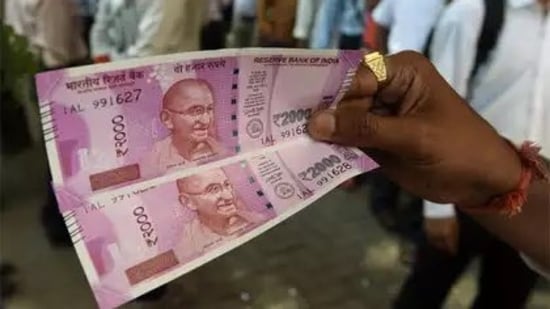The Reserve Bank of India referred to its withdrawal of ₹2,000 notes from circulation as a routine exercise that is part of its currency management operations, in its recent communique. RBI governor Shaktikanta Das on May 22 clarified that time will be given till September 30 to exchange or deposit their ₹2,000 notes in their respective bank accounts, and starting May 23, in all the 19 regional offices of the RBI.
The currency may remain legal tender even after September 30, the RBI Governor suggested, although more clarity is needed on this. Thus, the note has not been demonetised as what happened in 2016, when the ₹500 and ₹1,000 currency notes in circulation at the time ceased to be legal tender on November 8 that year.
Section 24 of the Reserve Bank of India Act, 1934, stipulates that bank notes shall be of the denominational values of ₹2, ₹5, ₹10, ₹20, ₹50, ₹100, ₹500, ₹1,000, ₹5,000 and ₹10,000 or of such other denominational values, not exceeding ₹10,000, as the Central Government may, on the recommendation of the Central Board, specify in this behalf.
The first banknote issued by independent India was the one-rupee note issued in 1949. While retaining the same designs the new banknotes were issued with the symbol of Lion Capital of Ashoka Pillar at Sarnath in the watermark window in place of the portrait of King George.
According to the RBI, one-rupee notes are issued by the government from time to time and continue to be legal tender. However, the printing of notes in the denominations of ₹2 and ₹5 has been discontinued, as they have been coinised to save costs. Nevertheless, these banknotes too can be found in circulation and continue to be legal tender.
Here are previous instances when currency has been withdrawn from circulation or demonetised in the 76 years since Independence:
- January 1946: At the start of 1946, a year before India gained independence, the ₹500, ₹1000 and ₹10,000 bank notes in circulation were demonetised. The last, printed in 1938, remains the highest denomination note to ever be printed by the RBI.
- January 1978: The ₹10,000 note was again introduced in 1954, along with the ₹1,000 note and ₹5,000 notes. All the three were demonetised in 1978.
- January 2014: The RBI decided to withdraw from circulation all banknotes issued prior to 2005 as they had fewer security features as compared to banknotes printed after 2005. To be sure, the withdrawal was organic — there was no demonetization, or even an exchange mechanism such as the one put in place for 2000 denomination notes.
- November 2016 (and now): The ₹2,000 denomination banknote was introduced after the withdrawal of the legal tender status of all ₹500 and ₹1,000 banknotes in the Mahatma Gandhi (MG) 2005 series in circulation at that time. The series bank notes were issued in the denomination of ₹10, ₹20, ₹50, ₹100, ₹500 and ₹1000 and contained additional/new security features as compared to the 1996 MG series. However, the RBI stopped printing ₹2,000 notes in 2018-19 and the notes were rarely in circulation. They will now be withdrawn.
Enjoy unlimited digital access with HT Premium
Subscribe Now to continue reading

